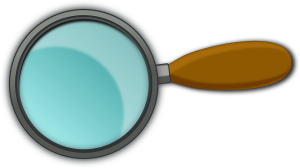What’s hiding in your Vitamin / Mineral Supplements? Have you ever read the small print on the ingredient labels of your dietary supplements? You may be shocked to know that many times, there are ingredients that should NOT be in your vitamins. When you purchased them, did you get a “great deal” on them? In the case of vitamin / mineral supplements, you definitely get what you pay for, and, in a not-so-good way, more than you bargained for! All flashy vitamin labels are vying for your attention, but what’s actually inside? I often think I’d like to go into the grocery store and see everything in plain bottles and brown wrapping paper with ONLY the name of the item, ingredients, and their origin listed. Please, if you haven’t done so already, start becoming a “label-reader,” and know what you and yours are about to ingest. Use a magnifying glass if necessary!
Some Countries Use Questionable Ingredients

Some Countries Have Far Different Ingredient Ideas and Regulations Where Pharmaceuticals Are Concerned
The other day, someone sent me a CNN report about Chinese pharmaceutical companies being supplied by…(yes, this is real)…cockroach farmers.1 Apparently, the cockroach business is booming where Chinese pharmaceuticals (and snacks) are concerned! While the idea of consuming cockroaches may sound repulsive to many people in the United States, these types of ingredients are often considered elixirs in some other countries. Please understand that China is a major supplier of everything in the United States, as are some other countries where regulations are lax-to-nonexistent, and/or have highly different beliefs than the United States about what is actually “good for you.” A few years ago (more than once), there were outbreaks of pet illnesses and deaths caused by poisonous dog treats from China.2 The most common statement/question I heard was, “I didn’t know our dog food was made in China! Why isn’t it being made in the USA?” That question can apply to many, many of our products! We all must arm ourselves with knowledge, which begins with reading labels and understanding where the product comes from, as well as the ingredients you plan to ingest.
There Are Exceptions
There are countries that produce certain types of herbs, spices and fruits highly sought-after for their health properties, which cannot be grown in the U.S. because of climate and soil conditions. These ingredients are tested rigorously for purity on many levels before ever qualifying for use in any of our formulations (when and if they are used). For instance, the world-renowned spice, turmeric (from which curcumin is derived), is native to southwest India. It has been used both for cooking and medicine in Asia for thousands of years.
Gray-Area Ingredients in Supposed US-Made Vitamin / Mineral Supplement Brands

A friend recently showed me a new supplement she was taking for vision support that made very promising claims in large print on the front of the bottle. It also said it was made in the USA. We inspected the label more closely and found its gel capsule was actually made of a type of farmed quasi bottom-fish which is known to be questionable if not toxic. Needless to say, she’s not taking that anymore. Yes, there are brands of dietary supplements whose gel caps are made of the inexpensive type of farm-raised fish, tilapia. But where is the tilapia actually being raised? “The United States provides less than 10% of tilapia consumed domestically.”3,4
Looking at the USDA Economic Research Service Aquaculture Trade Tables (2016), we can plainly see the sources of the majority of our tilapia:
5Because farmed fish are raised in confined spaces, they can easily acquire bacterial infections which then require antibiotics. Residues from these antibiotics can cause cancer and antibiotic resistance.6 And then, there is the practice of adding manure to fish ponds, which has been done for centuries in various countries. 7 Different countries have far different rules (if any) where farming fish is concerned.8,9 “Chinese fish farms are regarded as poorly regulated.”10 Another question: is the imported tilapia being screened by the FDA? “Currently, less than 2 % of the imported seafood is tested by FDA for chemical and microbial contaminants. …FDA must encourage the retailers to sell U.S. raised tilapia fillets alongside imported seafood, because it is almost impossible to find domestic tilapia fillets.”11
All things considered, wrapping a vitamin in a gelcap made of tilapia seems to be counter productive. Vitamin gel capsules made of tilapia? No thanks!
Animal Adrenal Glands
Another unsavory additive to dietary supplements to avoid: animal adrenal glands. Animal adrenal glands are obtained from factory farming slaughterhouses, and most certainly should not be in your dietary supplements. Taking supplements with bovine adrenal glands may feel good at first, but that is because it contains compounds equivalent to the drug prednisone- these compounds are known as glucocorticoids. It is dangerous to take unregulated doses of prednisone-like substances not only because it can compromise your tissues such as muscles, ligaments, skin, and your immune system, but also because it can cause suppression of your adrenal glands. Then, if these supplements are abruptly stopped you may have low blood pressure and dizziness and may not be able to keep up your blood pressure if you become ill because your adrenals, used to taking doses of glucocorticoids, will not be ready to manufacture more when you need them when you are ill.
Toxic Ingredients in Top-Selling Vitamin / Mineral Supplements
Let’s take it a step further. Here are the ingredient labels (for “Over 55” and “Heart Health” supplements) from the best-selling vitamin supplement brand in the United States today:


Here some ingredients that should NOT be there:
- tin (a proven toxin to living cells)12
- BHT (a preservative that is actually in Free Radical form which damages the DNA)13
- hydrogenated palm oil (hydrogenated oils increase the risk of atherosclerosis)14
- talc (a carcinogen)15
- Yellow 6 Lake (linked to adrenal tumors in animals and hypersensitivity reactions)16
And, by the way:
- they’re made and formulated outside the USA
A report coming from Consumer Labs states that three out of nine turmeric/curcumin supplements failed their quality review as they contained only minuscule amounts of curcuminoid compounds, and another supplement was found to be contaminated with small amounts of the known toxins: lead17 and cadmium.18 19
What You Can Do
- Start reading labels
- Make SURE the the vitamin/mineral supplements are made or formulated in the USA, or in a country with manufacturing regulations that are similar to that of the US
- Avoid: tilapia, animal adrenal glands, tin, BHT, hydrogenated oil (of any kind), talc and artificial colors/flavors
Learn more about Supplement Quality here >>>
Please remember to first discuss dietary supplementation with your physician as dietary supplements can react with medications as well as with one another.
Resources
1. McKenzie D. Eating cockroaches in China: Healing and delicious? CNN.com Updated 10:00 PM ET, Sun August 31, 2014 Accessed 2/11/16 (CNN)
2. United States Food and Drug Administration. Questions and Answers Regarding Jerky Pet Treats. Updated February 19, 2015. Accessed 2/11/16 (FDA)
3. Tilapia-Farming.com. Safety Concerns & Healthier Eating Trends Driving Change and Opportunity for U.S. Seafood Producers. December 23, 2015. Accessed 2/11/16 (Tilapia-Farming-Indonesia)
4. Liao CM, Chen BC, Singh S, Lin MC, Liu CW, Han BC. Acute toxicity and bioaccumulation of arsenic in tilapia (Oreochromis mossambicus) from a blackfoot disease area in Taiwan. Environ Toxicol. 2003 Aug;18(4):252-9. (PubMed)
5. USDA Economic Research Service. Aquaculture Trade Tables Created January 6, 2016. Accessed February 4, 2016 (USDA)
6. Shames L. Seafood Safety: FDA needs to improve oversight of imported seafood and better leverage limited resources. United States Government Accountability Office. April 2011. Accessed 2/11/16 (GAO)
7. Schroeder G. Fish Farming in Manure-Loaded Ponds. Integrated Agriculture-Aquaculture Farming Systems. 1980;73-85. (Google Books)
8. Gale F, Buzby J. Imports From China and Food Safety Issues. Economic Information Bulletin No. (EIB-52) 37 pp, July 2009. (USDA)
9. Kar S, Maity JP, Jean JS, Liu CC, Liu CW, Bundschuh J, Lu HY. Health risks for human intake of aquacultural fish: Arsenic bioaccumulation and contamination. J Environ Sci Health A Tox Hazard Subst Environ Eng. 2011;46(11):1266-73. doi: 10.1080/10934529.2011.598814. (PubMed)
10. Rosenthal E. Another Side of Tilapia, the Perfect Factory Fish. The New York Times. 5/2/11. Accessed 2/11/16 (NYT)
11. Babu B, Ozbay, G (2013) Screening of Imported Tilapia Fillets for Heavy Metals and Veterinary Drug Residues in the Mid-Atlantic Region, USA. J Food Process Technol 4:266. doi:10.4172/2157-7110.1000266 (Omicsonline)
12. Boniewska-Bernacka E, Man D, Słota R, Broda MA. Effect of tin and lead chlorotriphenyl analogues on selected living cells. J Biochem Mol Toxicol. 2011 Jul-Aug;25(4):231-7. doi: 10.1002/jbt.20380. Epub 2010 Dec 10. (PubMed)
13. Oikawa S, Nishino K, Oikawa S, Inoue S, Mizutani T, Kawanishi S. Oxidative DNA damage and apoptosis induced by metabolites of butylated hydroxytoluene. Biochem Pharmacol. 1998 Aug 1;56(3):361-70. (PubMed)
14. Han, S. N., L. S. Leka, A. H. Lichtenstein, L. M. Ausman, E. J. Schaefer, and S. N. Meydani. Effect of hydrogenated and saturated, relative to polyunsaturated, fat on immune and inflammatory responses of adults with moderate hypercholesterolemia. J. Lipid Res. 2002. 43: 445–452. (JLR)
15. Merliss R. Talc-treated rice and japanese stomach cancer. Science 17 Sep 1971: Vol. 173, Issue 4002, pp. 1141-1142 DOI: 10.1126/science.173.4002.1141 (ScienceMag)
16. Kobylewski S, Jacobson M. Food Dyes A Rainbow of Risks. Center for Science in the Public Interest. June 2010;vi Accessed 2/11/16 (CSPINET)
17. Lead toxicity update. A brief review.Nikolas C Papanikolaou, Eleftheria G Hatzidaki, Stamatis Belivanis, George N Tzanakakis, Aristidis M Tsatsakis Med Sci Monit 2005; 11(10): RA329-336 ID: 430340 Published: 2005-10-01 (Medscimonit)
18. Nath R , Prasad R , Palinal VK , Chopra RK. Progress in Food & Nutrition Science. Molecular basis of cadmium toxicity. (PMID:6385135)
[1984, 8(1-2):109-163] (EuropePMC)


